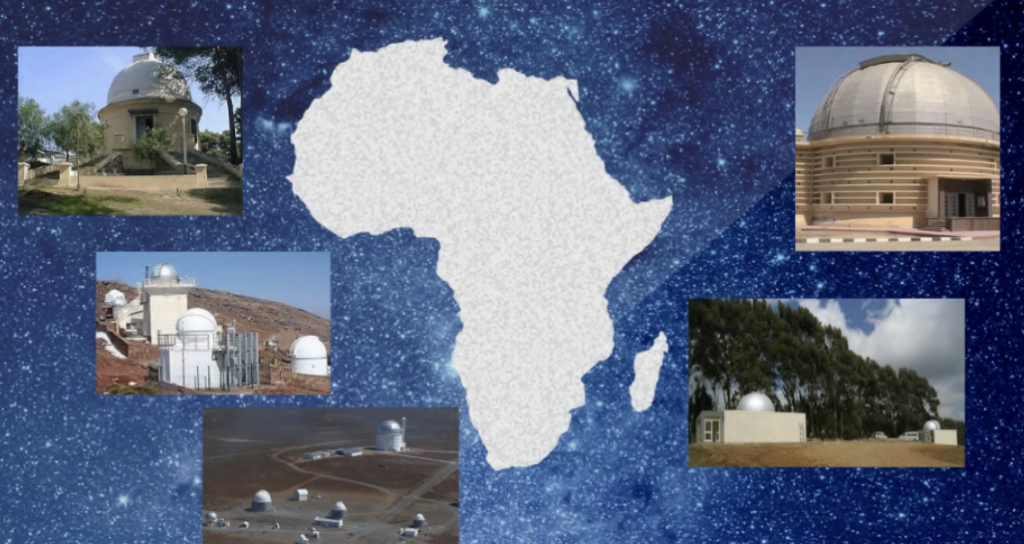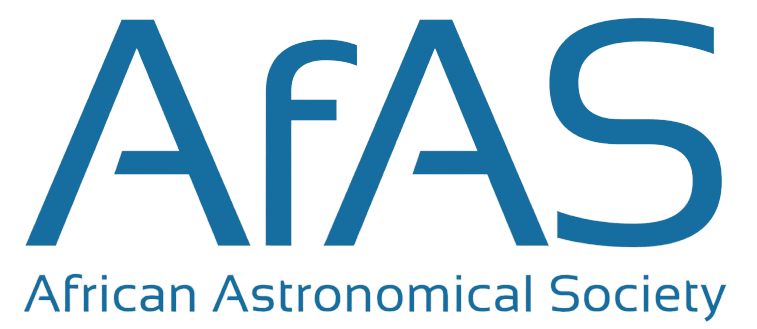
Background and Motivation
Astronomy is developing rapidly on the African continent and at the same time, we see advancements in the field at a global scale. The way that we study astronomy is also changing in tandem with the large amounts of data collected by current observatories and this trend will continue into the future, especially with upcoming global facilities, for example, SKA in the radio and the Rubin Observatory in the optical. African facilities will be increasingly important in the era of transient and survey science, for example, SALT, SAAO, Kottamaia, Oukaïmeden, Entoto, etc, in the optical domain, MeerKAT, AMT, AVN, etc, in the radio and HESS for TeV gamma rays. It is now crucial that African nations collaborate amongst themselves and leverage on common areas of interest while taking advantage of cooperation with partners from other developing countries from across the world.
The African Astronomical Society (AfAS) was relaunched in March 2019 and mandated by the African astronomy community to realise the mission and vision of the Society by carrying out the objectives set out in its constitution. These objectives include;
- cultivating collaboration among countries in Africa as well as collaborations between Africa and the rest of the world,
- supporting collaborative international astronomical activities and projects in Africa,
- encouraging governmental and intergovernmental (AU) investment in astronomy-related activities,
- increasing the number of African astronomers as well as the number of astronomers working in Africa, and;
- facilitating the use of existing international astronomical facilities, and, where necessary, the development of new astronomical facilities in Africa.
Concurrently, South Africa hosts the Secretariat of the BRICS Astronomy Working Group (BAWG). In the short term, AfAS has agreed to incubate BRICS Astronomy within its organisation, realising that synergies and collaborations can be achieved between the AfAS and BRICS countries. The incubation period will continue until the BAWG has decided on the best option for establishing an independent entity for its astronomers. The BRICS Intelligent Telescope and Data Network (BITDN) project is led by Prof David Buckley as the Lead Investigator and South African Co-PI, together with Prof Russ Taylor, and supported by two Co‐PIs from each of the other 4 BRICS member countries.
The close relationship that will be developed between BRICS Astronomy and AfAS will allow for a complementary flagship programme on the African continent that may eventually evolve into an African Integrated Observation and Data Network, leveraging on the BITDN and the initiative of the Intelligent Observatory (IO) at South African Astronomical Observatory (SAAO) that will be made up of networked telescopes that will receive, interrogate and react to discovery alerts from facilities around the world (like the Vera C. Rubin Observatory) and then automatically conduct follow-up observations of targets of interest. In the context of the African continent, we can envisage the development of a network of optical telescopes building on the SAAO IO that incorporates facilities like the Entoto Observatory in Ethiopia, the Bouzareah Observatory in Algeria, the refurbished Kottamia Astronomical Observatory in Egypt, Oukaimeden Observatory in Morocco, plus future optical telescopes in Burkina Faso, and Kenya (KOTI). In addition, university observatories (e.g. University of the Free State’s Boyden Observatory and the observatory at North West University) could also potentially be involved.
The African Integrated Observation System can have a range of benefits such as scientific research opportunities, shared access to telescopes, exchange programs, outreach, and capacity building. The new facilities that China and Russia may seek to deploy at African sites, such as the SiTian project and the existing MASTER II, Las Cumbres Observatory (LCO), MeerLICHT, and ATLAS global robotic optical telescopes, may also enable Africa to potentially collaborate and host optical telescopes from other countries. There are undoubtedly numerous such instances of prospective future robotic telescope facilities that might benefit from being located on the African continent.
